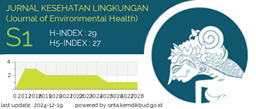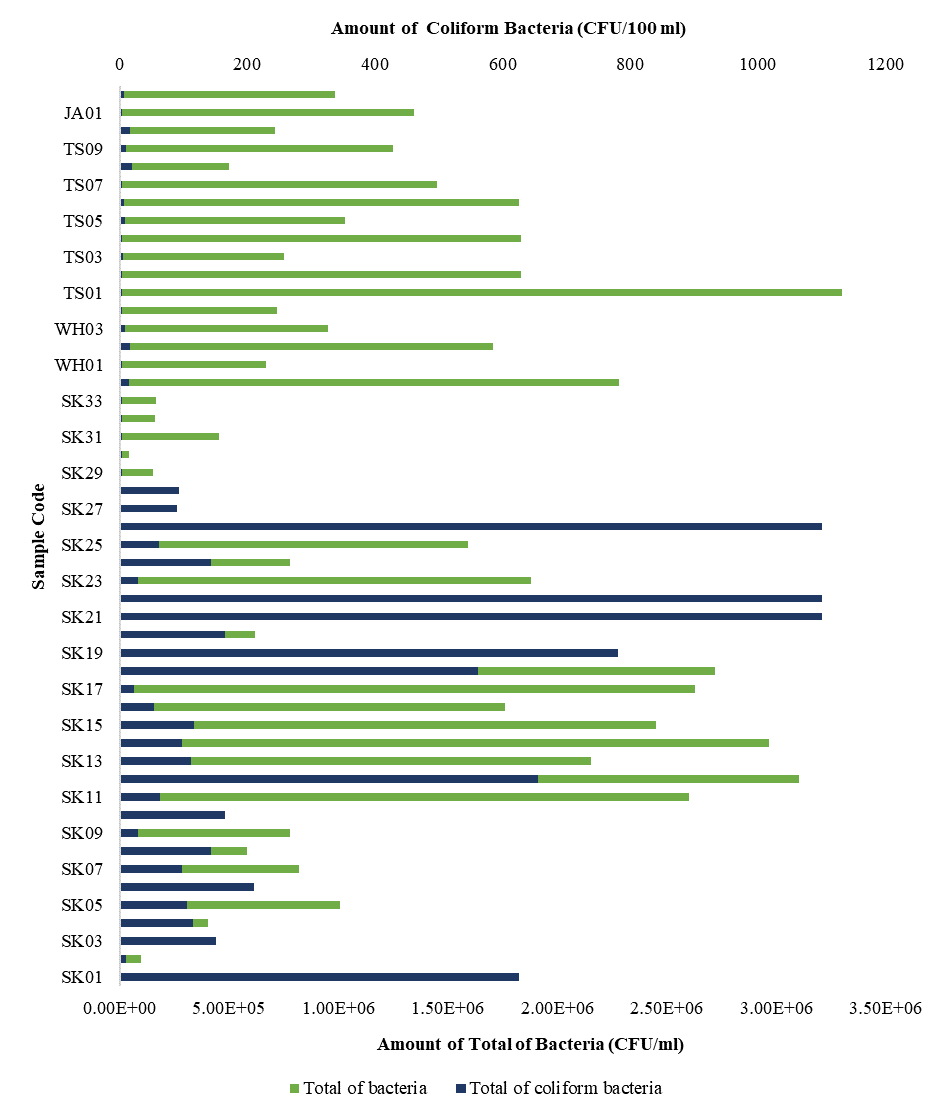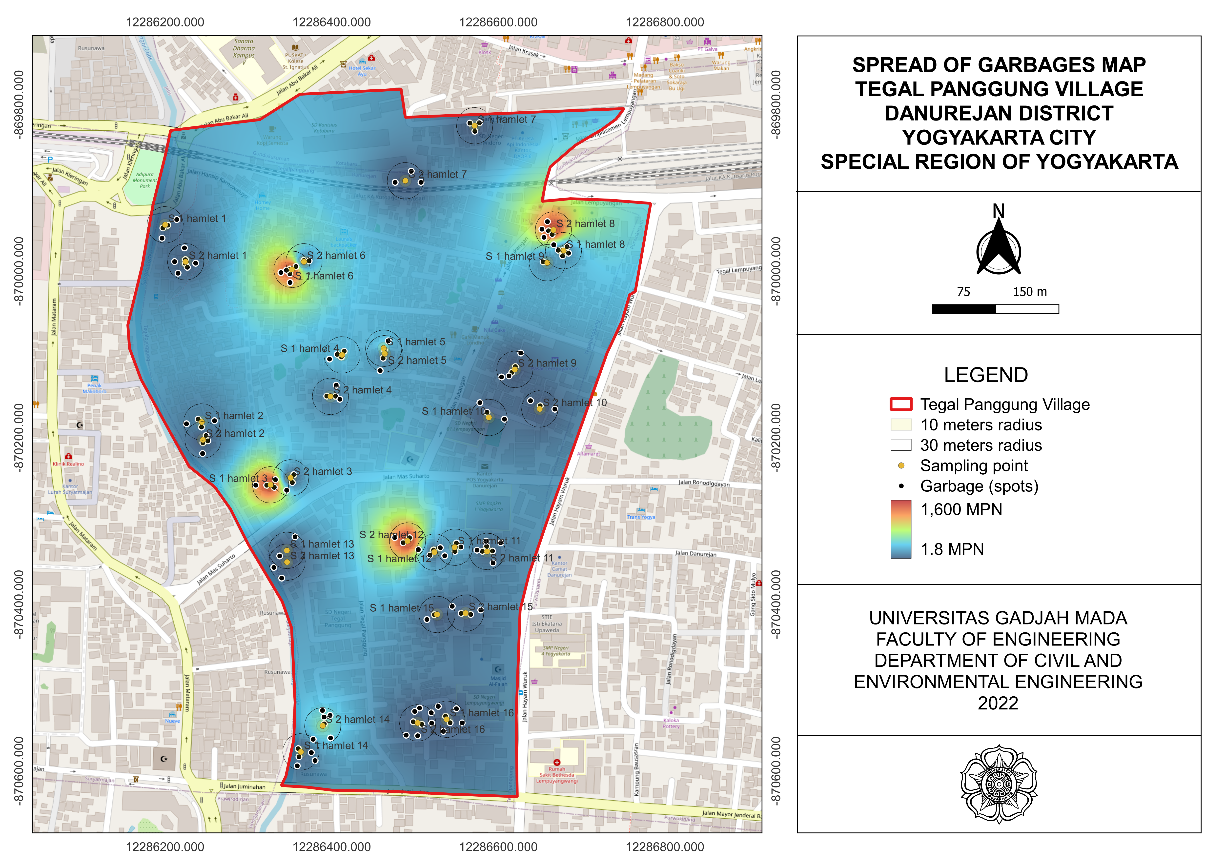The Association between Weather Variability and Dengue Hemorrhagic Fever in Tegal Regency
Downloads
Achmadi, U. F. (2009). Manajemen Penyakit Berbasis Wilayah. Jurnal Kesehatan Masyarakat Nasional, Vol. 3, No. 4, 147–153.
Ariati, J., & Anwar, D. (2012). Kejadian Demam Berdarah Dengue (DBD) dan Faktor Iklim di Kota Batam, Provinsi Kepulauan Riau. Jurnal Ekologi Kesehatan, Vol. 11, No. 4, 279–286.
Arsin, A. A. (2013). Epidemiologi Demam Berdarah Dengue ( DBD ) di Indonesia. Makassar: Masagena Press.
Bappenas. (2010). Peluncuran "Indonesia Climate Change Sectoral Roadmap (ICCSR).” Jakarta.
BMKG. (2019). Suhu Udara, Kelembapan Udara dan Curah Hujan Kabupaten Tegal tahun 2012-2018. https://dataonline.bmkg.go.id
Dinas Kesehatan Provinsi Jawa Tengah. (2017). Profil Kesehatan Provinsi Jawa Tengah tahun 2016. Semarang.
Dini, A. M. V., Fitriany, R. N., & Wulandari, R. A. (2010). Climate and Incidence Rate of Dengue Hemorragic Fever in Serang District. Makara Journal of Health Research, Vol. 14, No. 1, 37–45.
http://journal.ui.ac.id/index.php/health/article/view/644
Kementerian Kesehatan RI. (2010). Buletin Jendela Epidemiologi. Pusat Data dan Surveilans Epidemiologi Kementerian Kesehatan RI.
Kementerian Kesehatan RI. (2012). Peraturan Menteri Kesehatan Republik Indonesia Nomor 035 tahun 2012 tentang Pedoman Identifikasi Faktor Risiko Kesehatan akibat Perubahan Iklim. Jakarta.
Kementerian Kesehatan RI. (2016). Profil Kesehatan Indonesia 2016. Kementerian Kesehatan Republik Indonesia. Jakarta.
Kosfeld, R. (2006). Spatial Autocorrelation. https://www.uni-kassel.de/fb07/fileadmin/datas/fb07/5-Institute/IVWL/Kosfeld/lehre/spatial/SpatialEconometrics2
Mangguang, M. D. (2010). Analisis epidemiologi penyakit demam berdarah dengue melalui pendekatan spasial temporal dan hubunganya dengan faktor iklim di Kota Padang tahun 2008-2010.
Masrizal, & Sari, N. P. (2016). Analisis Kasus DBD berdasarkan Unsur Iklim dan Kepadatan Penduduk melalui Pendekatan GIS di Tanah Datar. Jurnal Kesehatan Masyarakat Andalas, Vol. 10, No. 2, 166–171. https://doi.org/24426725
Djati Anggun Paramita, Santoso, B., & Satoto, T. B. T. (2012). Hubungan Faktor Iklim Dengan Demam Berdarah Dengue Di Kabupaten Gunung Kidul Tahun 2010. Jurnal Ekologi Kesehatan, Vol. 11, No. 3, 230–239.
Seksi P2P Dinas KabupatenTegal. (2019). Data DBD Di Kabupaten Tegal Tahun 2012-2018.
World Health Organization. (2005). Using climate to predict infectious disease epidemics. Geneva: WHO Document Production Services.
World Health Organization. (2019). Dengue and severe dengue who.
https://www.who.int/en/news-room/fact-sheets/detail/dengue-and-severe-dengue
Yasin, M. (2012). Hubungan Variabilitas Iklim dengan Kejadian Demam Berdarah Dengue di Kota Bogor Tahun 2004-2011. Universitas Indonesia.
Zhang, T., Yang, S., Jiang, X., & Asia, E. (2014). Variations and Seasonal Prediction of Wet and Dry Season Precipitation over the Maritime Continent : Roles of ENSO and Monsoon Circulation related to the climate features over. Science and Technology Infusion Climate Bulletin. St. Louis.
https://www.nws.noaa.gov/ost/climate/STIP/39CDPW/39cdpw-SYang.pdf
2. Formal legal provisions to access digital articles of electronic journal are subject to the provision of the Creative Commons Attribution-ShareAlike license (CC BY-NC-SA), which means that Jurnal Kesehatan Lingkungan is rightful to keep, transfer media/format, manage in the form of databases, maintain, and publish articles.
3. Published manuscripts both printed and electronic are open access for educational, research, and library purposes. Additionally, the editorial board is not responsible for any violations of copyright law.
JKESLING by UNAIR is licensed under a Creative Commons Attribution-ShareAlike 4.0 International License.







































